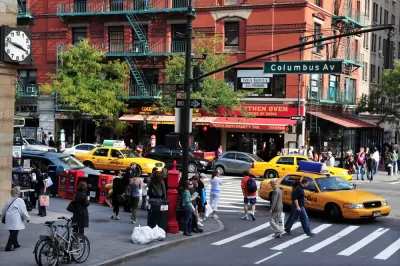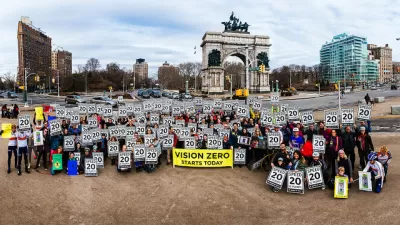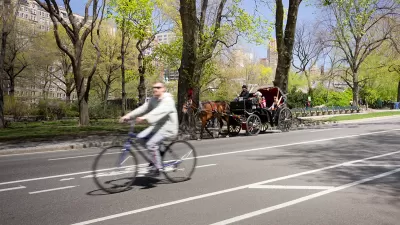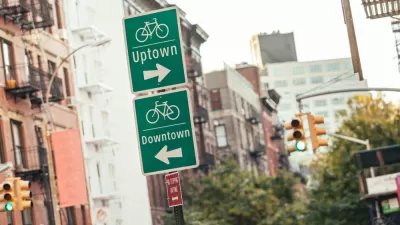Results showing progress in the fight to end traffic fatalities have disappeared, just like some of the safety projects installed under the banner of Vision Zero.

Nicole Gelinas reflects on a deadly week on the streets of New York City—"six people killed in car crashes in just two days"—following a "bloody summer for walkers and bicyclists."
According to Gelinas, the death toll raises the question of how seriously Mayor Bill de Blasio is taking his Vision Zero campaign to end road deaths by 2024. According to Gelinas, the city reduced traffic deaths an encouraging amount in 2014 and 2015, but 2016 isn't looking likely to continue that trend.
Gellinas suggests that the city isn't doing enough, fast enough, to invest in pedestrian and bike safety. The city has also worked to opposite effect recently, as exemplified by city's recent decision to remove "pedestrian islands along Brooklyn’s dangerous Eastern Parkway," designed "to help schoolchildren cross the street more safely."
An article by David Meyer puts that decision in perspective:
DOT removed pedestrian islands on Eastern Parkway in Crown Heights yesterday, undoing years of street safety advocacy work on the part of local residents and community board members with no public process, and no one in the de Blasio administration is taking responsibility.
Meyer's article also shows evidence of the buck being passed around by the Mayor's Office, the NYPD, and the DOT. A follow-up article the next day, also by Meyer, reports that Mayor de Blasio eventually blamed the decision on an unnamed local politician.
FULL STORY: Why de Blasio hit a wall on stopping traffic deaths

Trump Administration Could Effectively End Housing Voucher Program
Federal officials are eyeing major cuts to the Section 8 program that helps millions of low-income households pay rent.

Planetizen Federal Action Tracker
A weekly monitor of how Trump’s orders and actions are impacting planners and planning in America.

The 120 Year Old Tiny Home Villages That Sheltered San Francisco’s Earthquake Refugees
More than a century ago, San Francisco mobilized to house thousands of residents displaced by the 1906 earthquake. Could their strategy offer a model for the present?

HSR Reaches Key Settlement in Northern California City
The state’s high-speed rail authority reached an agreement with Millbrae, a key city on the train’s proposed route to San Francisco.

Washington State Legislature Passes Parking Reform Bill
A bill that would limit parking requirements for new developments is headed to the governor’s desk.

Missouri Law Would Ban Protections for Housing Voucher Users
A state law seeks to overturn source-of-income discrimination bans passed by several Missouri cities.
Urban Design for Planners 1: Software Tools
This six-course series explores essential urban design concepts using open source software and equips planners with the tools they need to participate fully in the urban design process.
Planning for Universal Design
Learn the tools for implementing Universal Design in planning regulations.
Ada County Highway District
Clanton & Associates, Inc.
Jessamine County Fiscal Court
Institute for Housing and Urban Development Studies (IHS)
City of Grandview
Harvard GSD Executive Education
Toledo-Lucas County Plan Commissions
Salt Lake City
NYU Wagner Graduate School of Public Service





























